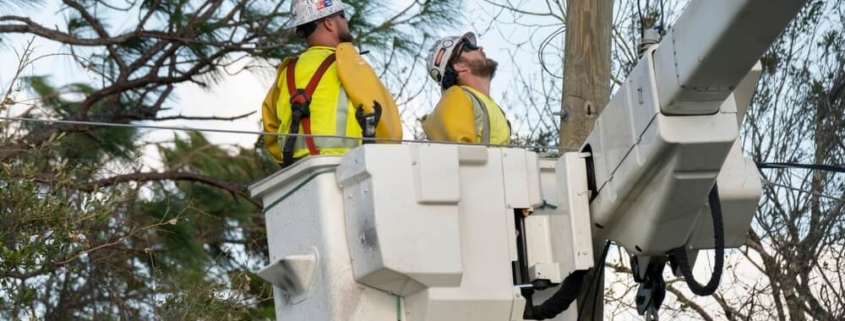Employer Responsibilities: Ensuring a Safe Work Environment for Power Linemen
Power linemen work atop our nation’s power lines, placing their lives on the line to ensure everyone has a steady supply of electricity. They are also responsible for installing, maintaining, and repairing those lines, sometimes asked to do their jobs in the dark or in the harshest weather conditions.
It’s a dangerous occupation that can result in serious injuries and even loss of life. Because of this, employers have a responsibility to ensure a safe work environment for power linemen. If they fail in this responsibility, the results can be catastrophic.
Common Risks Leading to Power Linemen Injuries
Here are some of the most common risks that can lead to power lineman accidents and injuries:
Code Violations
A manager or supervisor may not follow basic safety regulations before sending workers onto a job site or up a utility pole to do electrical work. By ignoring OSHA regulations or other standards, management is putting workers’ lives at risk. While it might be more costly and take additional time to follow these rules, ignoring them can have negative consequences.
Lack of Proper Safety Gear
Utility companies are required to ensure that power linemen have the proper safety equipment and personal protective equipment (PPE) to perform their jobs with the least amount of risk. If the equipment is missing, outdated, or worn out, this problem must be addressed immediately.
Poor Training and Coordination
Electrical injuries and falls from heights are almost always preventable. These are often caused by a lack of or poor training, subpar work supervision, and insufficient coordination between supervisors and workers. For example, supervisors are supposed to provide hand signals to workers that a high-voltage area is safe to approach.
Employer Responsibilities for the Safety of Power Linemen on the Job
Unfortunately, many utility companies don’t live up to their obligation to keep their employees safe. Through a desire to maximize profits, these companies try to cut corners, and power linemen often pay the price due to unsafe workplace conditions.
But, employers have a legal duty to protect the safety of their workers. Specifically in the power generation industry, OSHA, the National Electrical Contractors Association (NECA), and the International Brotherhood of Electrical Workers (IBEW) have created standards and best practices for lineman safety to prevent dangerous workplace accidents. Some of these include:
Fall Protection
Power linemen are required to use certain fall protection equipment to prevent falls from heights, depending on the work being performed and how it is being done. For example, there are different fall protection standards for work on towers versus work being done from bucket trucks. One OSHA standard says that fall arrest systems “must be rigged so that an employee can neither free fall more than six feet nor contact a lower level.”
Minimum Distances
According to OSHA standards, workers must maintain minimum distances between exposed energized power lines and scaffolding. The minimum distance is three feet for insulated lines of less than 300 volts. It’s 10 feet for uninsulated lines.
Job Briefings
Another common standard is that job briefings should be held at the beginning of a work shift or any time there is a significant change in work. These briefings should review routine and critical tasks, identify everyone’s roles and responsibilities, and identify any known hazards.
Qualified Observer
A qualified observer must be assigned to certain critical tasks to ensure that proper safety standards are being followed.
Protective Equipment
Employers are responsible for ensuring that all power linemen have the protective equipment they need to avoid serious accidents. Examples include rubber-insulating sleeves, rubber-handled tools, and personal protective equipment (PPE) like hard hats, gloves, and face shields.
Hazard Identification
One essential aspect of job site safety is making sure that everyone on the job site has the information needed about existing and potential hazards as well as the process for identifying hazards. Hazard identification is considered an administrative control that can identify risks such as damaged electrical equipment, buried and overhead power lines, scaffolding risks, and more.
Information Transfer
It’s critical that information related to the conditions of a work site and electrical equipment is communicated between work crews, contractors, and employers. These parties must also communicate any known hazards to prevent serious accidents.
Knowing and Asserting Your Rights as a Power Lineman
If you are a power lineman who has been injured on the job, you should know that your employer has a responsibility to provide a safe work environment free from hazards. Lineman Injury Attorneys are dedicated to providing workers with accurate and up-to-date information regarding OSHA guidelines. This information can help power linemen avoid serious accidents and assist workers in asserting their rights after a work-related injury.




Leave a Reply
Want to join the discussion?Feel free to contribute!